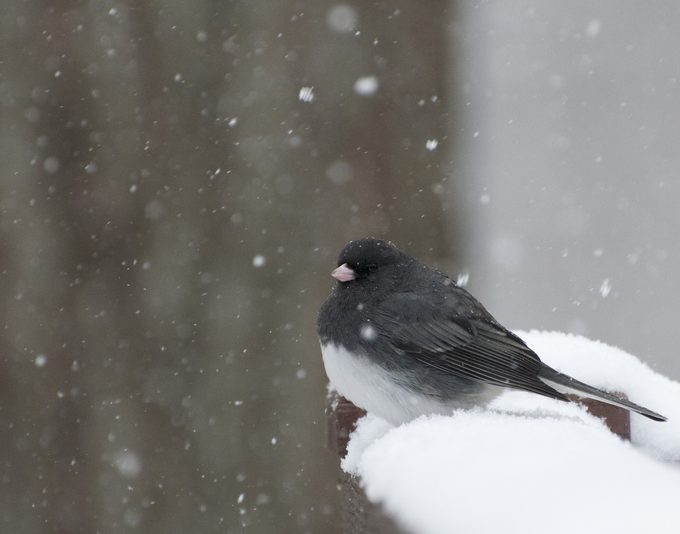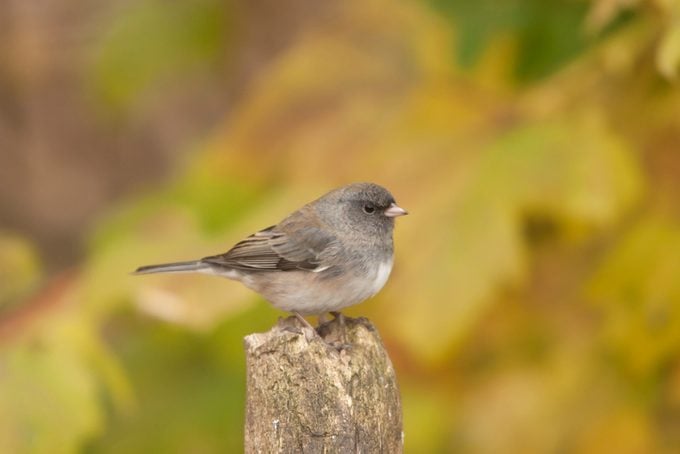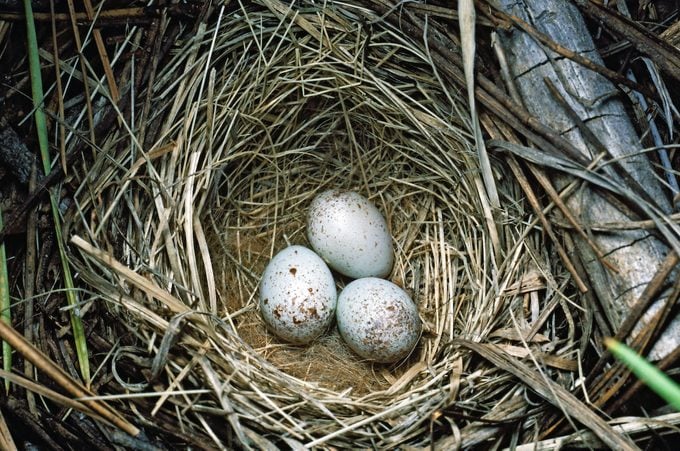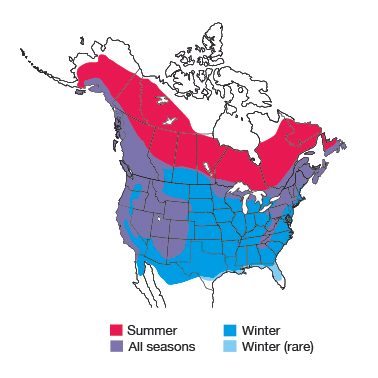How to Identify a Dark-Eyed Junco
Updated: Jul. 16, 2024
See what a male and female dark-eyed junco looks like. Plus learn about their nests and diet, and hear what a junco song sounds like.
On This Page
What Does a Dark-Eyed Junco Look Like?

Scientific Name: Junco hyemalis
Family: Sparrow
Length: 6 inches
Wingspan: 9 inches
Markings: Coloration varies regionally. Common characteristics are dark eyes, pink beaks, white-edged tails and black, brown or gray hoods.
The name “dark-eyed junco” applies to several populations, each with slightly different coloring. The slate-colored is the only junco in the East. The Oregon subspecies is the most widespread in the West; others with smaller ranges are the pink-sided, white-winged, gray-headed and red-backed. If you live in the West or are visiting in winter, it’s worth your while to look in a field guide so you know what you might see.
Don’t miss these adorable junco bird pictures.
Female and Juvenile Juncos

In most of the populations, female juncos are slightly lighter than the average male. Female slate-colored juncos, for instance, tend to be brown, while their male mates are closer to black. Juvenile juncos are often lighter and can be streaked.
Discover 8 cool facts about junco birds.
Diet: What Do Dark-Eyed Juncos Eat?

Juncos are seedeaters. In winter, juncos feast on seeds of weeds and grasses that are left standing in your landscape or in fields, parks and open woodlands. Seeds from common plants such as chickweed, buckwheat, lamb’s-quarters and sorrel make up 75 percent of their year-round diet. Or they may snatch a juicy berry from a fruit-producing shrub.
But juncos also supplement their diet with feeder foods. These snowbirds prefer to forage on the ground for millet, black-oil sunflower seed or cracked corn that has fallen from your feeders. They may occasionally take a seed from a platform or tray feeder.
Did you know: Some ground birds are considered hoppers while others are walkers. What about juncos? They’re hoppers!
Dark-Eyed Junco Nest and Eggs

Although juncos nest mostly in Canada and parts of Alaska, there are some year-round residents in pockets of the Lower 48, including the Northeast, the Northwest and the California coast.

The female constructs a cup-shaped nest on the ground using natural materials and then lays four to six pale, speckled eggs inside.
Junco vs chickadee: Here’s how to tell the difference.
Dark-Eyed Junco Song
Listen to the dark-eyed junco song. Their voice trills vary in pitch and tempo, from dry notes to tinkling sounds.
Bird songs provided by the Cornell Lab of Ornithology.
Range Map and Habitat
Dark-eyed juncos, also known as snowbirds, are thriving! Our friends at the Cornell Lab of Ornithology estimate their total population to be more than 630 million.
Juncos are common winter visitors across much of the United States. They travel in small flocks during the season. Juncos reappear in many parts of the Lower 48 just as winter comes alive each year. They leave their breeding grounds in the Northwoods and the western mountains. Then they descend on backyard feeding stations across much of the U.S.
Look for juncos in evergreen or mixed forests in summer. In winter, they visit all kinds of woods, brushy places, farms, parks, and backyards.

Range maps provided by Kaufman Field Guides, the official field guide of Birds & Blooms.
Next, learn how to identify and attract a chipping sparrow and a white throated sparrow.






















